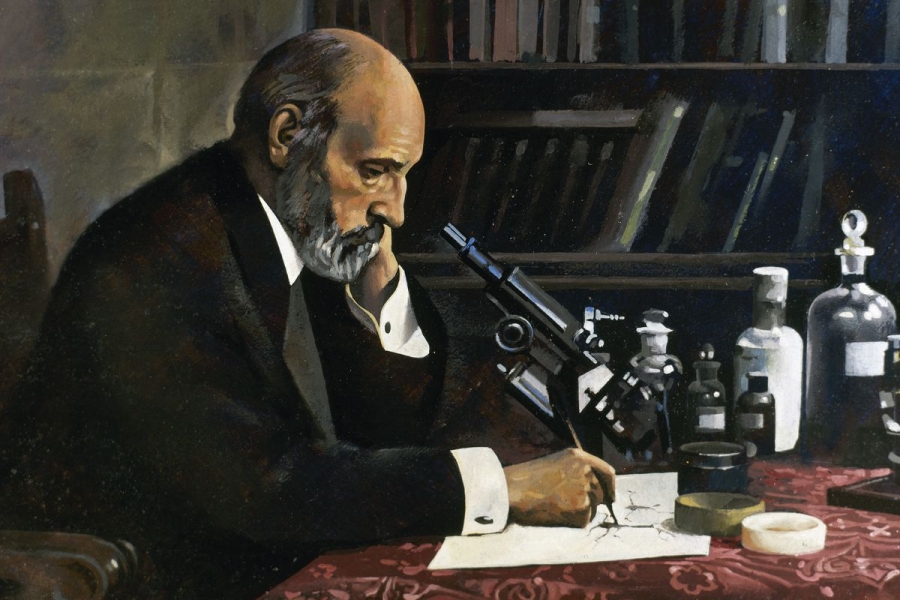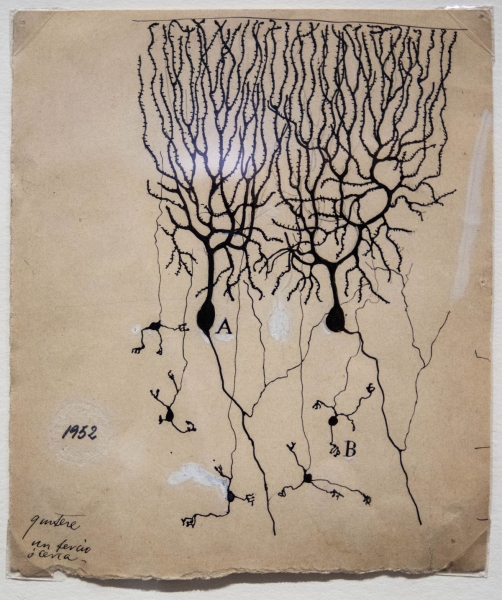Quantifying the “complexity” of consciousness can tell us how rich our experiences are.

Oshan Jarow is a Future Perfect fellow, where he focuses on economics, consciousness studies, and varieties of progress. Before joining Vox, he co-founded the Library of Economic Possibility, where he led policy research and digital media strategy.
Sometimes when I’m looking out across the northern meadow of Brooklyn’s Prospect Park, or even the concrete parking lot outside my office window, I wonder if someone like Shakespeare or Emily Dickinson could have taken in the same view and seen more. I don’t mean making out blurry details or more objects in the scene. But through the lens of their minds, could they encounter the exact same world as me and yet have a richer experience?
One way to answer that question, at least as a thought experiment, could be to compare the electrical activity inside our brains while gazing out upon the same scene, and running some statistical analysis designed to actually tell us whose brain activity indicates more richness. But that’s just a loopy thought experiment, right?
Not exactly. One of the newest frontiers in the science of the mind is the attempt to measure consciousness’s “complexity,” or how diverse and integrated electrical activity is across the brain. Philosophers and neuroscientists alike hypothesize that more complex brain activity signifies “richer” experiences.
The idea of measuring complexity stems from information theory — a mathematical approach to understanding how information is stored, communicated, and processed —which doesn’t provide wonderfully intuitive examples of what more richness actually means. Unless you’re a computer person. “If you tried to upload the content onto a hard drive, it’s how much memory you’d need to be able to store the experience you’re having,” Adam Barrett, a professor of machine learning and data science at the University of Sussex, told me.
Another approach to understanding richness is to look at how it changes in different mental states. Recent studies have found that measures of complexity are lowest in patients under general anesthesia, higher in ordinary wakefulness, and higher still in psychedelic trips, which can notoriously turn even the most mundane experiences — say, my view of the parking lot outside my office window — into profound and meaningful encounters.
Increasing richness isn’t just like cranking up the color saturation of a picture or getting a bigger hard drive. It seems to imply an increase in the depth of how we experience the world. Complexity is what you see in the equations, richness is what that feels like in the mind.
Although measuring brain complexity is still in relative infancy, the nascent ability to gauge something like richness is a pretty incredible development — not only for neuroscience but for how we think about well-being more broadly. With innovations like these, we can go beyond the blurry question of happiness, which doesn’t have an accepted neurological measure that can translate across social and cultural differences, and ask more targeted questions, like whether our experiences are richer. As these approaches mature, scientists might develop a deeper understanding of all the different, tractable ways that consciousness can change for the better.
From staining neurons black to measuring the brain’s complexity
In the 1800s, scientists studying the mind didn’t yet know what a neuron looked like, let alone how they worked. That breakthrough came in 1873, when physician Camillo Golgi discovered that by immersing brain tissue in a potassium dichromate solution and then dunking it in a bath of silver nitrate, the neuron would turn black, making it visible under a microscope.
The Spanish neuroscientist Santiago Ramón y Cajal, when observing newly stained neural tissue in 1887, discovered that contrary to the reigning reticular theory (which held that the nervous system was a continuous network of cells smushed together with no gaps), neurons were indeed separated from each other. Sprouting from the neuron’s edges were spindly little axons and dendrites, but they didn’t seem to create permanent bridges between the neurons, leading him to conclude that communication between neurons likely wasn’t all that important in explaining their main functions. Instead, individual neurons were taken as the nervous system’s fundamental units, or building blocks, an idea that solidified into “the neuron doctrine.”

Through the 20th century, developments in electrophysiology led to a sharper understanding of the connections between neurons, and the importance of the little electrical impulses that travel across synapses. But the basic perspective of focusing on neurons themselves, rather than the holistic electrical processes that they’re conduits for, remained dominant. This approach has gotten quite good at breaking the brain into distinct parts and explaining how they contribute to specific functions, like vision or controlling your fingers. The downside is that many theories of consciousness struggle with what’s called the binding problem — the question of how all the separate parts fit back together to generate a unified conscious experience.
Recent improvements to electroencephalography (EEG, those skull caps with a bunch of electrodes that measure the brain’s electrical activity) made it possible to look deeper inside the workings of the brain, opening the way for neuroscientist Giulio Tononi and biologist Gerald Edelman’s 1998 paper: Consciousness and Complexity.
Their publication was the first to propose a direct measure of the complexity of brain activity, an idea that matured into Integrated Information Theory, or IIT. According to IIT, consciousness arises where the underlying neural activity is both “integrated” and “differentiated.” Integration refers, roughly, to how synchronized electrical activity is across the brain. Differentiation is the diversity of that activity. You can think of them in terms of weaving a tapestry. Integration is how many different threads are woven in, while differentiation is the variety of colors used. Together, these two determine the complexity of a given state of consciousness. That, in turn, approximates its richness.
In theory, anyway. At the time, the idea ran ahead of technology. “It became apparent over the years that it’s quite hard to measure those two things simultaneously,” Barrett told me, “and it turned out that the differentiation aspect alone, without thinking about integration, did quite well at being able to distinguish between different states of consciousness.”
That said, our measures are improving quickly. Barrett co-authored a study released as a pre-print last week that compared a new measure of complexity — what they call “statistical complexity” — to Lempel-Ziv complexity, which was first proposed in 1976 and is still the field’s leading measure. While Lempel-Ziv captures only the differentiation aspect, their findings suggest that the new measure successfully brings integration back into the mix, affording greater precision.
As progress continues, IIT may creep closer to its grand ambition: constructing an equation that can measure and describe the richness of conscious experience in any physical system, whether human, animal, or machine. “That fails at the moment,” said Barrett, “but I’m very interested in seeing if we could come up with a plausible equation. That’s sort of the holy grail for me.”
So what do we make of richness?
If a plausible equation isn’t the kind of thing that occupies your dreams, a concrete measure for something like richness could bring some sorely needed innovation to our ideas around mental health. The Diagnostic and Statistical Manual of Mental Disorders (the DSM-5) contains 298 diagnoses to help clinicians classify just about every shade of mental disorder they might encounter. When it comes to the positive dimensions of mental health, however, our language is comparatively sparse.
“Happiness” is a very nebulous idea, especially when you try to measure it. We in the West, unlike the Buddhists, have not developed rigorous taxonomies for all the rungs on the mental ladder — from our default modes to the ecstasies, grades of zest, or senses of “deep okayness” that lurk in the upper realms of well-being (reportedly, anyway). If we can quantify the richness of our minds, maybe it could jumpstart the process of finding other tractable dimensions we can add to our conceptions of well-being.
Of course, quantifying something important always carries risks (à la Goodhart’s law: when a measure becomes a target, it ceases to be a good measure), and being wise about how to make sense of these new ideas will be bumpy. It’s tempting, for example, to simply think that when it comes to richness, more is always better. But researchers, like Future Perfect 50 honoree Robin Carhart-Harris, believe that the brain evolved to hold levels of complexity below a threshold called “criticality,” rather than just maximize it.
In information theory, criticality marks the optimal balance of complexity for processing information, a perch between order and chaos. Or in terms of the mind, between the rigidity and flexibility of mental habits. Too much complex activity pushes the brain over the edge. That might offer a temporarily exciting state of mind (as psychedelic trips can), but in terms of efficiently processing information to be successful creatures in the world, a never-ending acid trip is probably not the ideal state. “A brain at criticality may be a ‘happier’ brain,” Carhart-Harris writes.
If criticality means greater well-being calls for a particular balance of complexity, not just as much as we can muster, that doesn’t mean that we’re all, by default, naturally tuned to that balance. As our measures and technologies improve, maybe we’ll get better at identifying when someone’s ordinary brain activity is below criticality, and a burst of complexity could serve as a boon to well-being. Maybe we’ll develop new ways of growing richer, not just in our bank accounts (though that may help), but in the ways that we experience the world.
Source: vox.com






